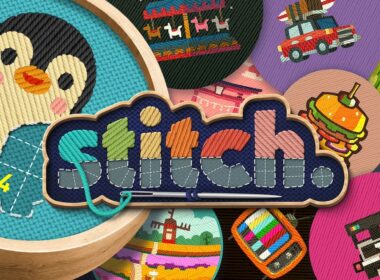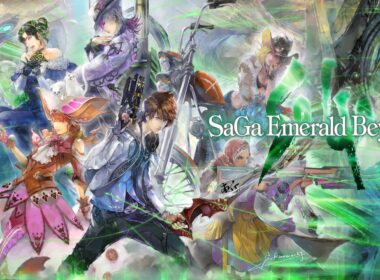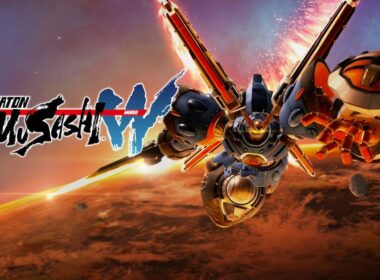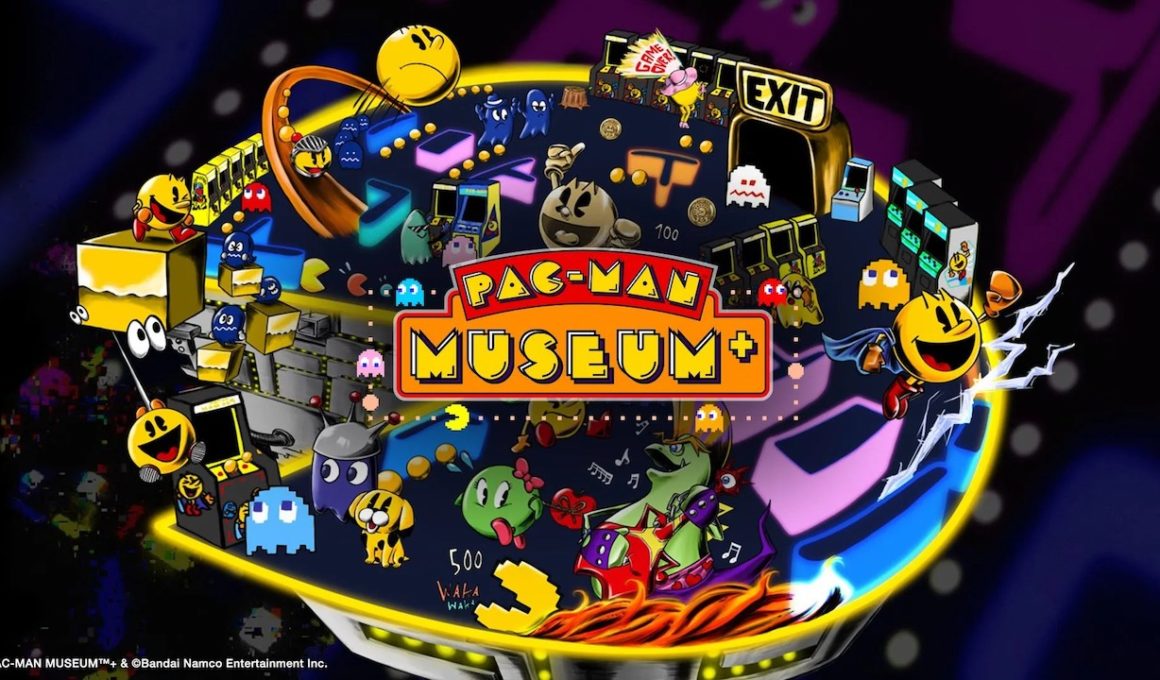How many Pacs can a Pac-Man pack if a Pac-Man could pack Pacs? According to Bandai Namco Entertainment‘s latest compilation for the Nintendo Switch, a rather generous fourteen titles. All of which feature the granddaddy of video game mascots himself.
While the core premise of Pac-Man has seen little change outside of being a ghost-busting Babybel with a rather unhealthy pill addiction, this retro rockstar’s constant need to reinvent himself makes Pac-Man Museum Plus surprisingly quite the versatile package.
Starting when it all began with the 1980s classic, Pac-Man. This coin-chomping yellow wooden box of memories is the sheer pinnacle of timeless gameplay. With the simplicity of only one map, an algorithm of pathways to memorise, and a high score to measure up against, Pac-Man is, and will always be one of the greatest videogames of all time.
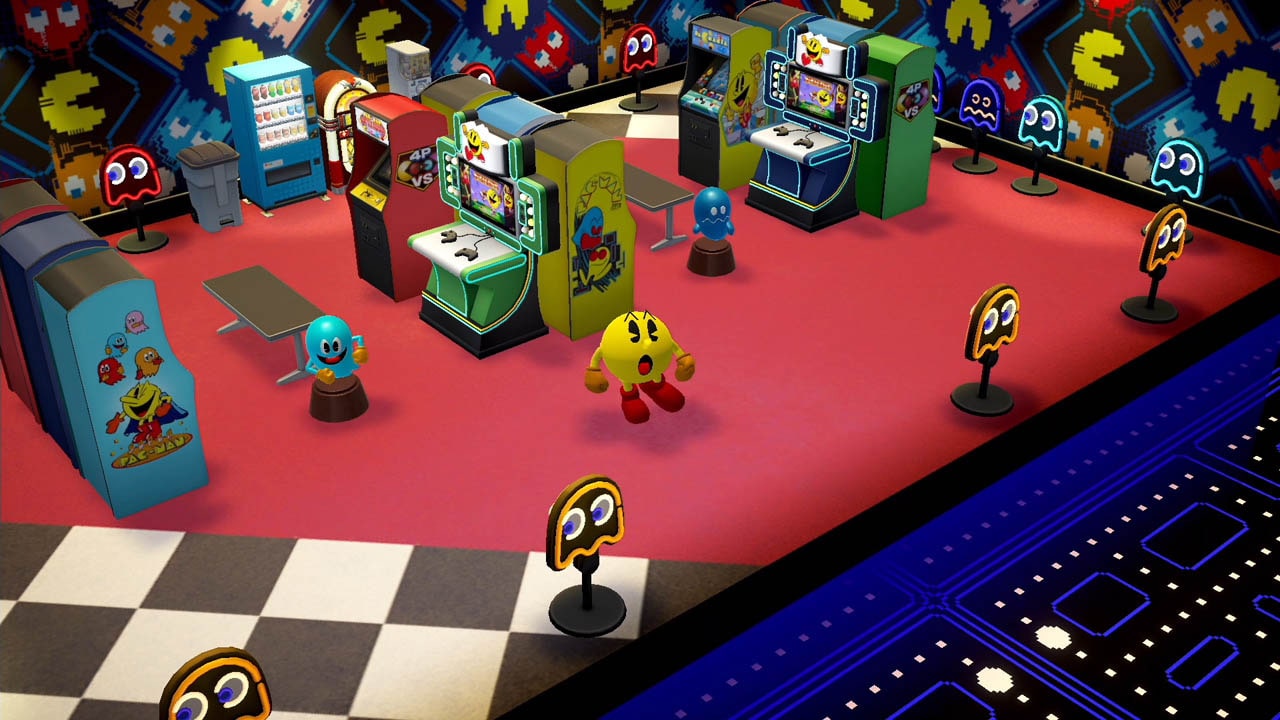
1982’s official sequel, Super Pac-Man sees our ghost-gobbling hero ease back on the pharmaceuticals in favour of the much healthier choice of yummy fruit. However, this time, he must now collect keys to unlock doors to gobble up even more fruit while keeping those ghastly ghouls at bay. Pac-Man also has access to a new pill that hulks him up and allows him to smash through doors for a limited amount of time. A sequel that is not nearly as popular as his debut title, but still provides plenty of replayability nonetheless.
In 1983’s Pac & Pal, Pac-Man gets a little helping hand in the form of Mil. Unfortunately, Mil can tend to do more harm than good when he grabs fruit and inconveniently runs away with it. Building on the base of both the original and the official sequel, Pac & Pal sails around unlocking even more doors to nom all that delicious zest.
1984, Pac Land originally beat old Mario to the scrolling platformer genre. Based on the Hanna Barbera cartoon featuring the pellet chomping hero, this arcade platformer would soon pave the way for the world’s most cherished plumber. Considering its age, Pac Land looks bold and colourful, with giant sprite work to match. A no-brainer for any Pac-Man collection.
Diving back to his roots in 1987’s Pac-Mania, Pac-Man gets his first taste of the third dimension in this isometric take of the classic formula. This one I remember fondly from primary school days when the Acorn Archimedes computer would slowly replace the BBC micro. If I was lucky enough, I would get paired up with another classmate to have a blast between either this or Lemmings at dinnertime. The giant lego block-themed stages had plenty of charm and this arcade version still looks surprisingly great today.
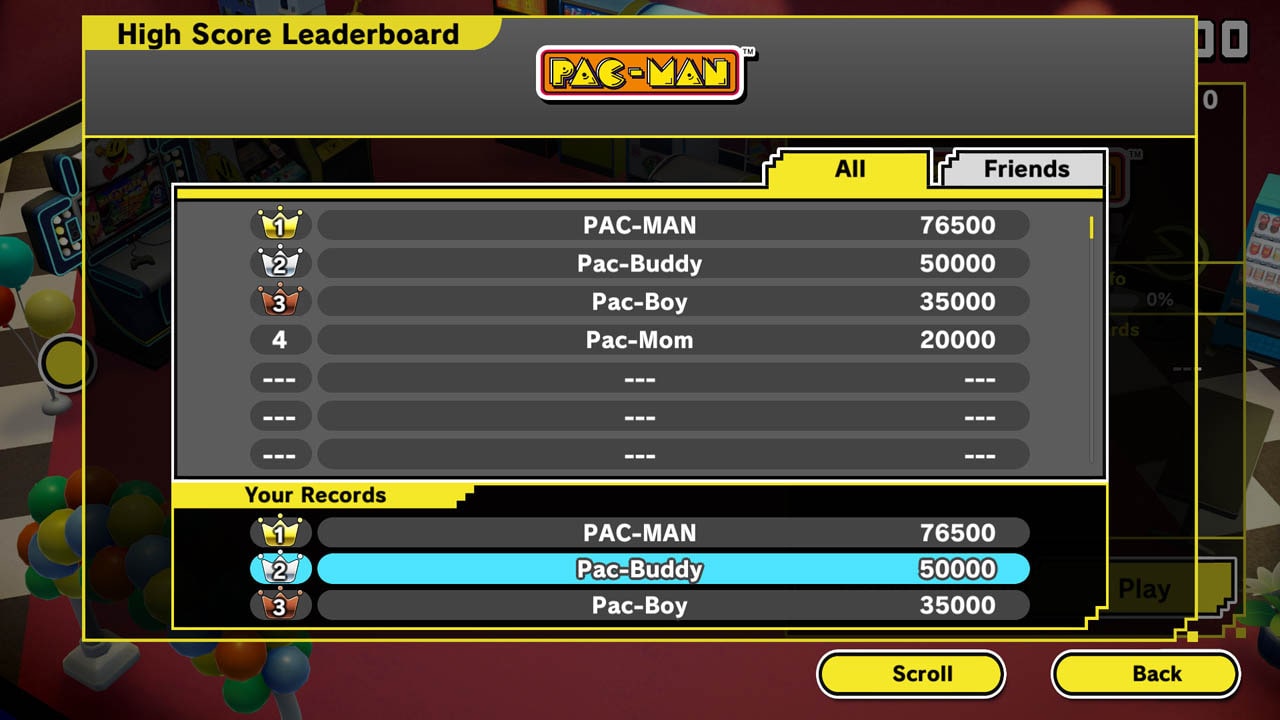
After a five-year hiatus, the next on the list is the 1993 SNES Pacman puzzler, Pac-Attack. Diving on the Tetris bandwagon following the likes of Yoshi’s Cookie and Dr Mario, Pac-Attack sees falling tetrominoes of solid blocks spliced with ghosts. Match three ghosts or more, and the next falling piece will guarantee a Pac-Man to gobble them up. Similar to Tetris, the aim is to clear lines to stay in play. Of course, that’s easier said than done then there’s a group of loitering ghosts in the way.
Trying his hand at platforming once again, Pac-Man goes Pac in Time. This slippery platformer of the mid-90s has some nice little ideas on finding the right tools for the job to progress to the end of each level. Unfortunately, slippery, imprecise controls and generic gameplay struggles to keep up with the killer platformers that dominated during its heyday.
The next on the list consists of two different versions of the same game. In Pac-Man Arrangement, the classic formula of pellet gobbling around a maze makes a return. One being the 1996 2D arcade version and the other is a 2005 3D PSP remake. This is pretty much classic Pac-Man with a few extra bells and whistles, which, in all honesty, tears the charm away that makes the original game so incredibly special.
This all completely changed with the Pacman Championship Edition. A game that not only turns the classic formula on its head but also happens to be, at least in my opinion, one of the most addictive games ever made. Once it got its hooks into me once again, I had to tear myself away to play the other games on the list. A five-minute time limit, a pace that increases to a blistering speed and that killer urge to better that last high score makes the Pac-Man Championship Edition impossible to put down.
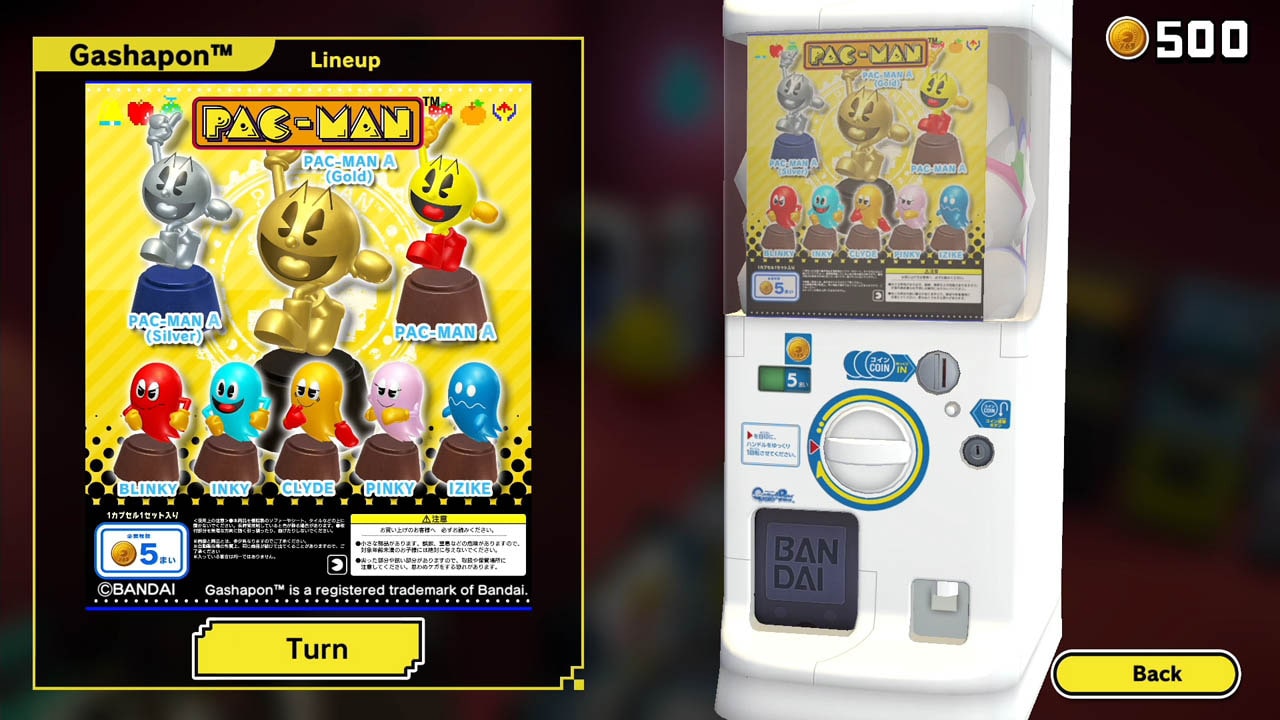
2007 Pac Motos takes another Namco game and fittingly sprawls their mascot’s name all over it. The idea is to force enemies off a platform into a sumo-style push-of-a-thon.
Think of the bullies in Super Mario 64 but as a full game based around it. Not really to my taste, but I’m sure it will have it’s own Reddit fan page somewhere.
Pac and Roll: Remix keeps within a similar visual style to Pac Motos, which makes sense considering that they were both featured in the Namco Museum Remix for the Wii. This one mashes together Monkey Ball with Marble Madness leading towards an enjoyable end result. It’s the one on the list begging for gyro controls which sadly isn’t an option.
Pac-Man Battle Royale is a 2011 modern arcade title tailored for four-player competitive play. It’s a very bitesize offering that could have been so much better than it is. The aim is to be the first to gobble a power pellet and eat the other players. It has the longevity of a Mario Party mini-game that feels like it was thought up in around ten minutes.
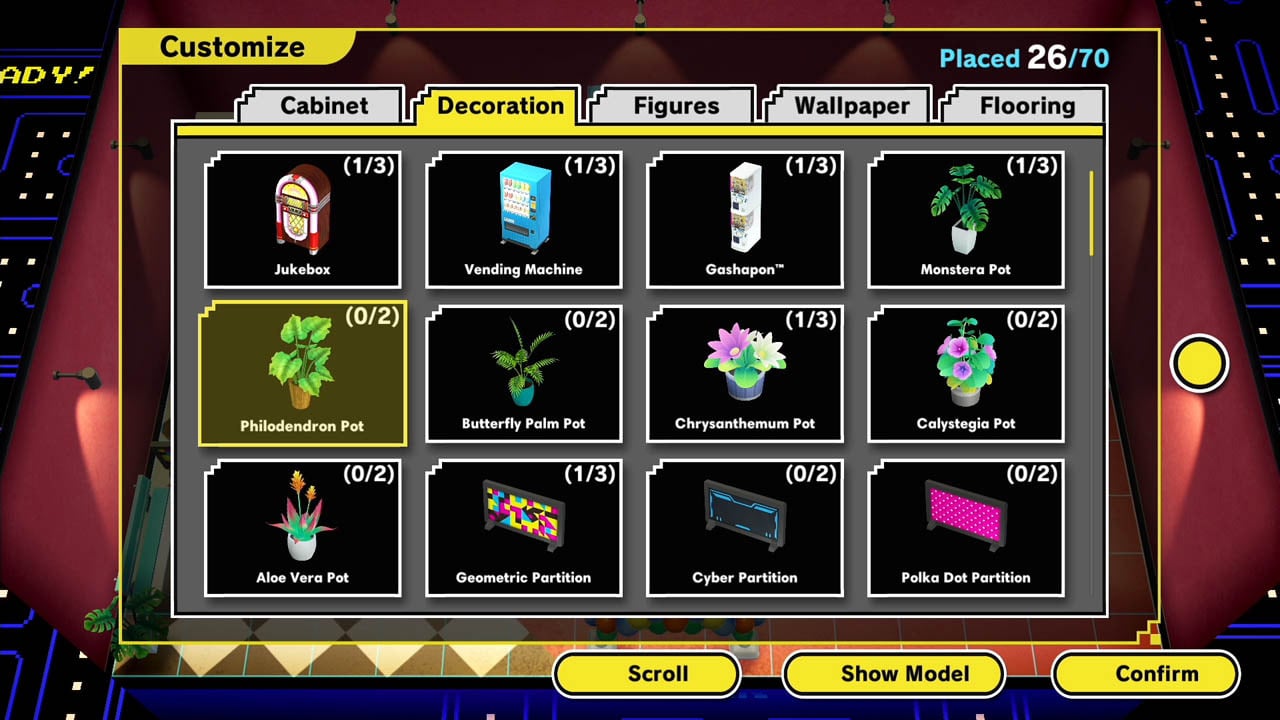
Finally on the list is Pac-Man 256. Developed by the crew who tortured the world with blocky frogger rip-off, Crossy Road, this Pac-Man take with a similar visual style wants to see how far you can go without dying. It’s a fun little game where up to four players can work together on an endless path in reaching distance goals to unlock cool new power-ups.
If building a virtual arcade of your own is something that appeals to you, then Pacman Museum Plus wraps its legacy of games by doing just that. Arcade cabinets modelled after the original coin-ops and jukebox record discs can be unlocked by completing missions across all fourteen titles. If that’s not enough, there’s even a capsule machine containing digital Pac-Man toys that can be tucked away within the arcade, allowing the player to spend coins earned from playing the games on offer.
While Animal Crossing-style room customisation is not really my thing, it did keep my daughter busy for hours while providing her with the curiosity of getting stuck into all the games on offer. At the very least, such an addition is a thoughtful way to celebrate both the mascot and the very roots from which he came.
Pause Menus provide a short blurb giving a brief overview for each game along with game guides to aid on how to play them. Unfortunately, there is no Tate mode to play the Nintendo Switch with the screen vertically, which is a shame considering that a fair number of titles on the list are traditionally played natively in a portrait aspect.
Another big omission is the lack of the incredible Pac-Man Championship DX. A game that is quite a different beast, and arguably better than the original Pacman Championship Edition. While most of Pac-Man’s history can be collected across several available Namco compilations for the system, including a modern de-make version of the original Championship Edition in Namco Museum Vol. 1, the fact that Champion Edition DX isn’t available anywhere on the hybrid system is just, well, unforgivable.
As a package though, Pac-Man Museum+ is certainly a welcome addition to join the robust army of retro collections now available for the Nintendo Switch. Not every game is necessarily a hit, but they are all still part of a legacy that was certainly vital in shaping the future of video games.
Version Tested: Nintendo Switch
Review copy provided by Bandai Namco Entertainment

